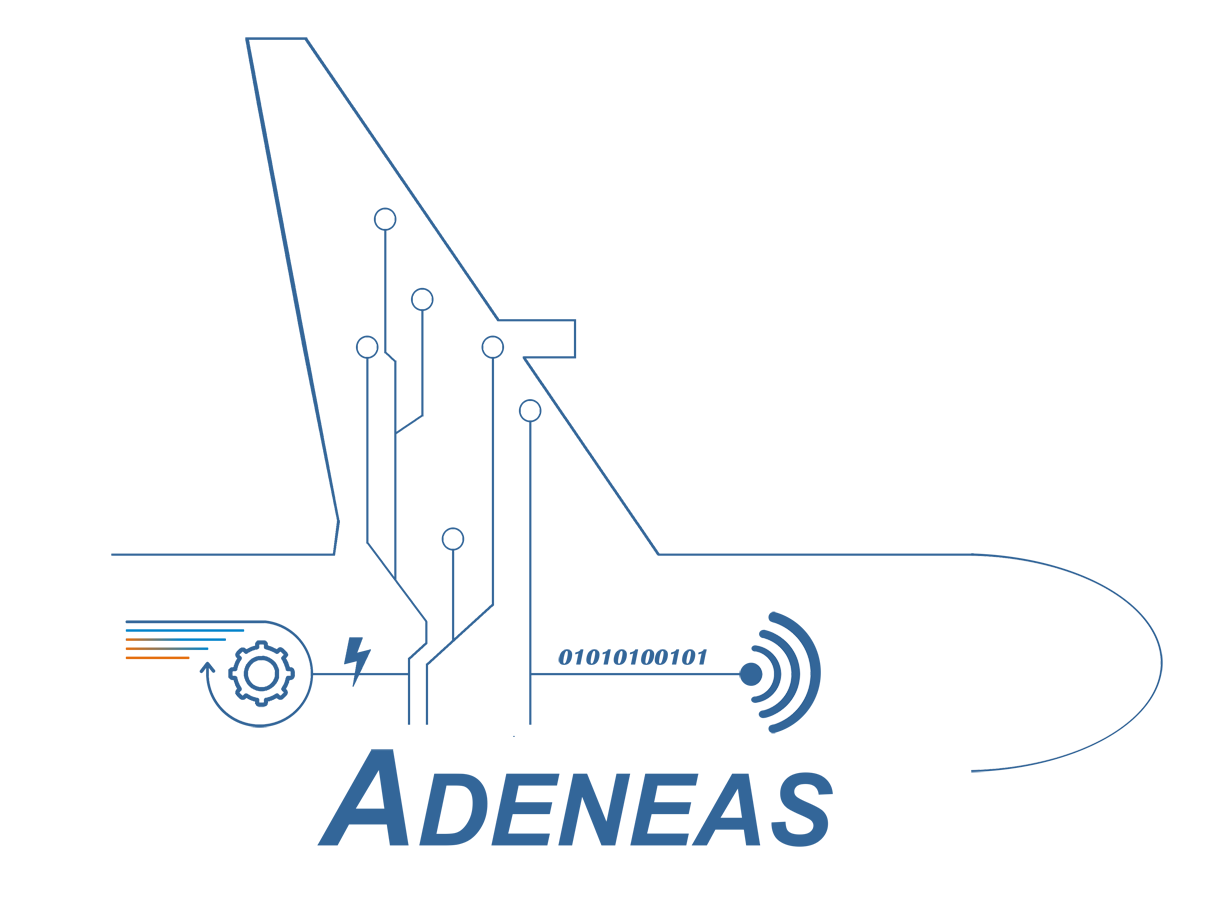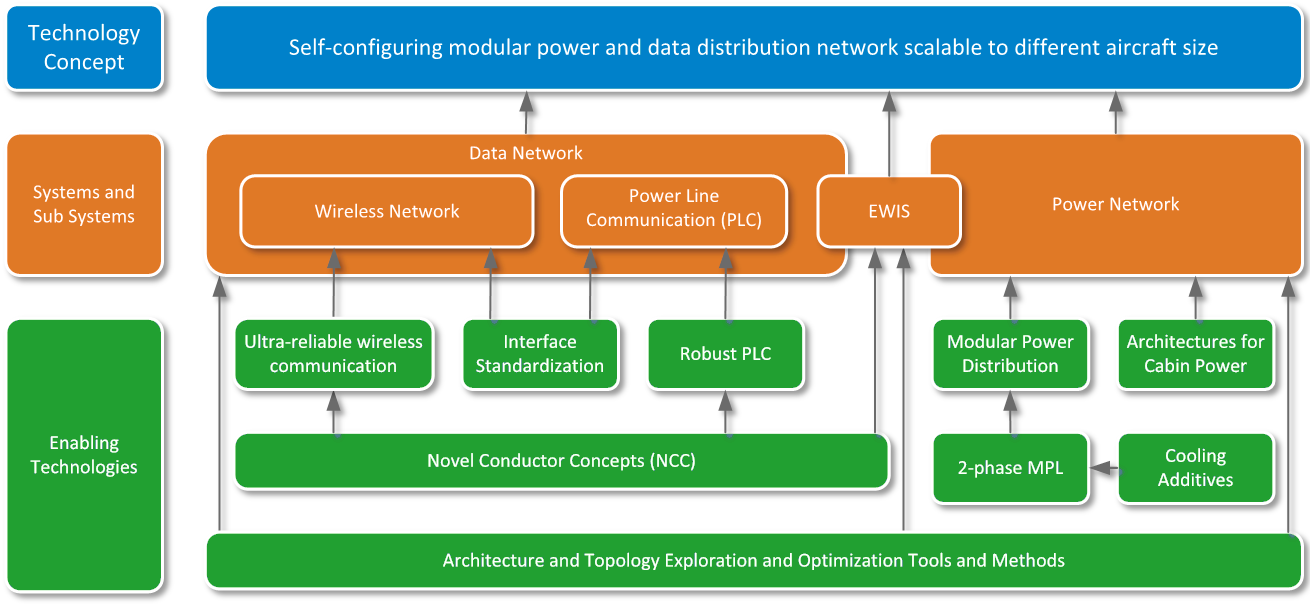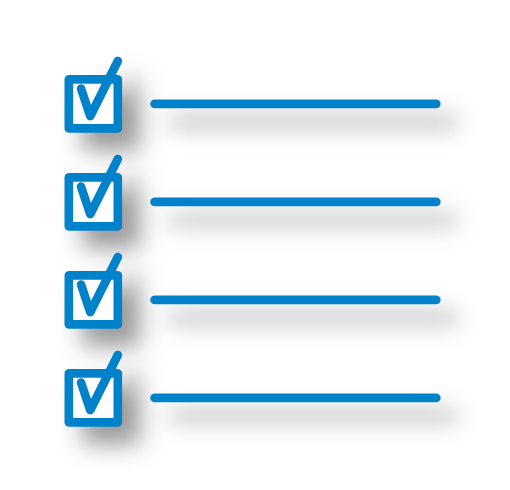Objectives
Concept
Scope
Objectives
ADENEAS overall mission is to pave the way for the design and development of a safe, light, self-configuring, autonomous and modular power and data distribution network that is scalable to all aircraft sizes. In order to contribute reaching this dot on the horizon – with an estimated 10-year lead-time – ADENEAS has defined the following objectives:
- OB1: Develop advanced enabling technologies for intra-aircraft data communication and for power network
- OB2: Develop new architecture concepts for advanced data and power networks
- OB3: Develop advanced Artificial Intelligence (AI) – based design tools which can facilitate the processing of new system requirements and architectures
- OB4: Develop a cooling system using a nano-fluid-based additive
- OB5: Demonstrate at TRL3 to TRL5 the integration of the developed technologies
- OB6: Ensure the uptake of the ADENEAS technologies beyond the end of the project
Concept
The ADENEAS concept consists of a power- and a data network, which complies with future MECA (More Electric and Connected Aircraft) demand in capacity and reliability for intra-aircraft application. The concept is modular, while the integration of enabling technologies is optimized, and standardization makes them interchangeable.
The ADENEAS activities are broken down into seven technical work packages (WPs) framed by the management WP:

WP1 – Requirements & System specification
WP1 will outline in detail the requirements, standards, and specifications for the various systems being researched in this project to facilitate baseline inputs to the subsequent technical WPs.

WP2 – Wireless Technologies
WP2 will design and validate future-proof and scalable techniques for ultra-reliable wireless communication. The proposed techniques will be validated using simulation tools and experimental set ups.
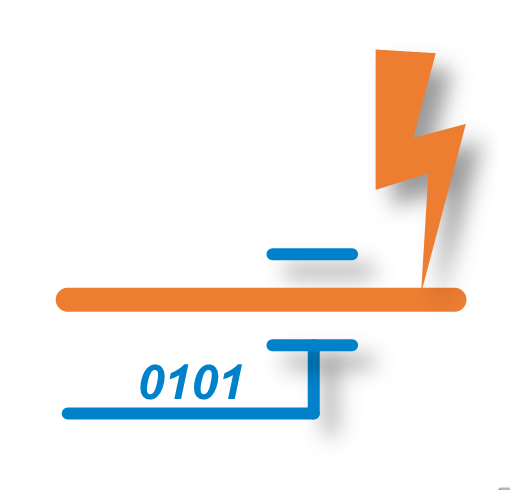
WP3 – Power Line Communications
WP3 will focus on developing a scalable data bus solution for communicating data over the aircraft power distribution network using Power Line Communication (PLC) technology.
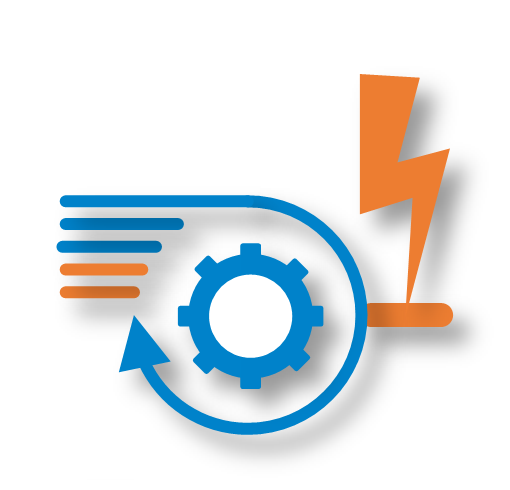
WP4 – Modular Distributed Power
WP4 will develop an optimized cabin power distribution network, with the leveraging of an external hardware demonstrator based on modular secondary power distribution architectures

WP5 – Cooling Solutions
WP5 will develop a modular and scalable 2-phase cooling system based on Mechanically Pumped Loop (MPL) technology. Evaluation and characterization of nano-fluid coolant for these systems will be conducted.
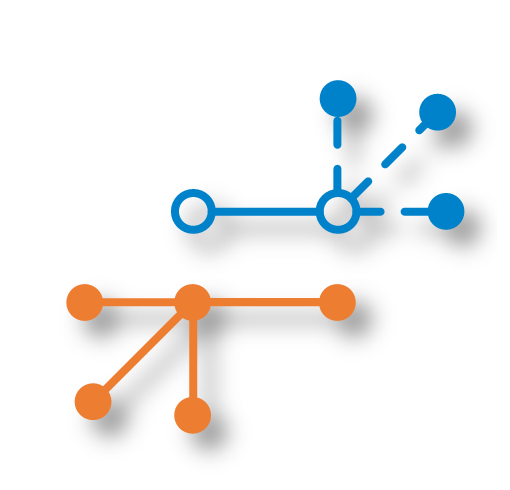
WP6 – Architectures & Topologies
WP6 will utilize advanced methods to explore and optimize the design of the aircraft power and data networks (modular and reconfigurable power distribution systems, the optimization of Electrical Wiring Interconnection Systems (EWIS) for integrated data and power systems, and the optimization of data networking).
WP7 – Technology Impact, Evaluation, Assessment & Optimization
The main goal of the WP7 is to assess technological aspects of the developed systems and concepts with respect to originally defined requirements in WP1. This will be done through implementation and evaluation of all key technical solutions developed in previous WPs. To demonstrate all key technology developments, the ground-based demonstrator (GBD) will serve as a representation of an A220 size aircraft with respect to the power and data network.
Scope
Application scope:
ADENEAS target to deliver solutions scalable to all aircraft sizes (CS23 and CS25). The ADENEAS enabling technologies will pave the way towards a safe, light, self-configuring, autonomous, modular power and data distribution network.
Technology scope
- Strong focus on integrateability of power and data network enablers into different aircraft and electrical architectures.
- Focus on integrating different enablers into a hybrid system maximizing use of benefits of individual enabler.
